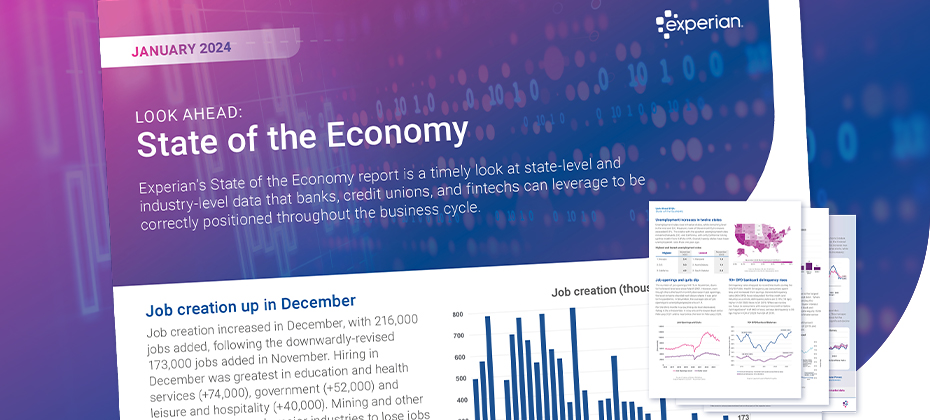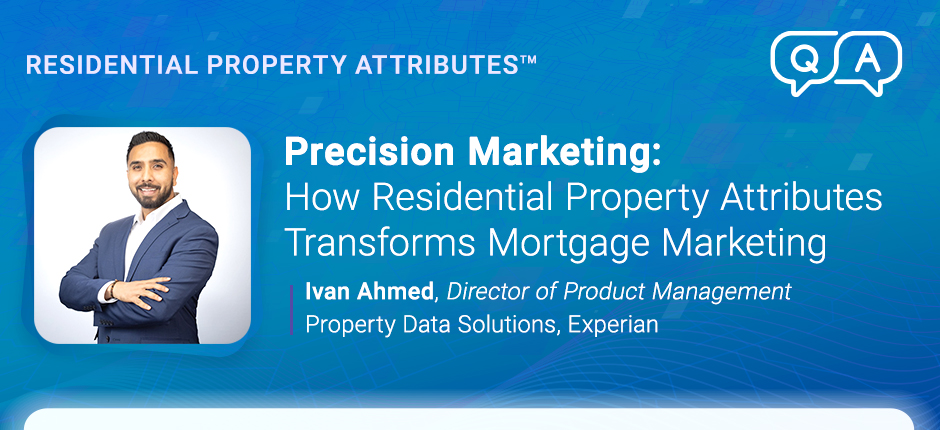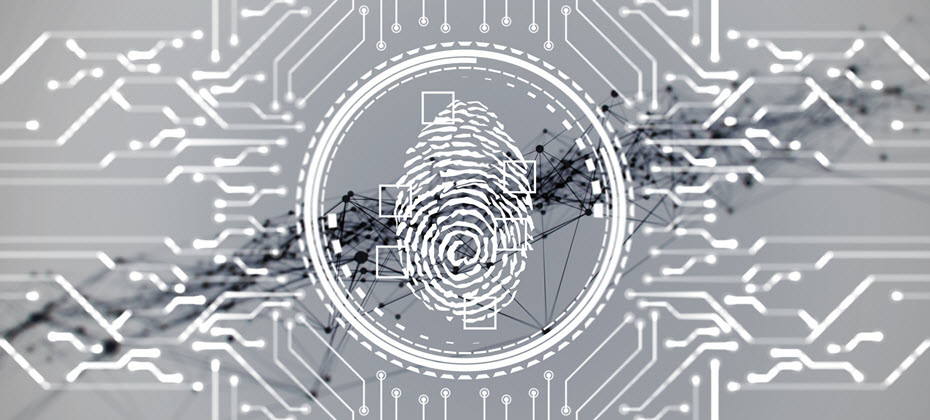Apply CIS Tag

This article was updated on January 30, 2024. Income verification is a critical step in determining a consumer’s ability to pay. The challenge is verifying income in a way that’s seamless for both lenders and consumers. While many businesses have already implemented automated solutions to streamline operations, some are still relying on manual processes built on older technology. Let’s take a closer look at the drawbacks of traditional verification processes and how Experian can help businesses deliver frictionless verification experiences. The drawbacks of traditional income verification Employment and income verification provides lenders with greater visibility into consumers’ financial stability. But it often results in high-touch, high-friction experiences when done manually. This can be frustrating for both lenders and potential borrowers: For lenders: Manual verification processes are extremely tedious and time-consuming for lenders as it requires physically collecting and reviewing documents. Additionally, without reliable income data, it can be difficult for lenders to accurately determine a consumer’s ability to pay, leading to higher origination risk. For borrowers: Today’s consumers have grown accustomed to digital experiences that are fast, simple, and convenient. A verification process that is slow and manual may cause consumers to drop off altogether. How can this process be optimized? To accelerate the verification process and gain a more complete view of consumers’ financial stability, lenders must look to automated solutions. With automated income verification, lenders obtain timely income reports to accurately verify consumers’ income in minutes rather than days or weeks. Not only does this allow lenders to approve more applicants quickly, but it also enables them to devote more time and resources toward improving their strategies and enhancing the customer experience. The right verification solution can also capture a wider variety of income scenarios. With the click of a button, consumers can give lenders permission to access their financial accounts, including checking, savings, 401k, and brokerage accounts. This creates a frictionless verification experience for consumers as their income information is quickly extracted and reviewed. Retrieving data directly from financial accounts also provides lenders with a fuller financial picture of consumers, including those with thin or no credit files. This helps increase the chances of approval for underserved communities and allows lenders to expand their customer base without taking on additional risk.1 Learn more 1 Experian Income Verification Product Sheet (2017).

This series will dive into our monthly State of the Economy report, providing a snapshot of the top monthly economic and credit data for those in financial services to proactively shape their business strategies. As 2024 unfolds, the economy is beginning to shift from last year’s trends. Instead of focusing on rate hikes, we’re looking at the potential for rate cuts. Our labor market is beginning to ease, and inflation is moving closer to the Federal Reserve’s 2% mark. Each month’s data gives us a clearer picture of our economic trajectory and the Federal Reserve’s (Fed) policy moving forward, as well as new and direct implications on credit metrics. Data highlights from this month’s report include: The U.S. economy added 216,000 jobs in December, but after November and October levels were revised, three-month average job creation now sits below the pre-pandemic level. While there was no change in November, annual core inflation, which excludes the volatile food and energy components, cooled in December from 4.0% to 3.9%. Consumer sentiment rose 14% in December, reversing the past four monthly declines, driven by increased optimism toward the trajectory of inflation. Check out our report for a deep dive into the rest of this month’s data, including student loans, consumer spending, the housing market, and delinquencies. To have a holistic view of our current environment, we must understand our economic past, present, and future. Keep an eye out for this year’s chartbook for a comprehensive view of the past year and download our latest forecast for a view of what’s to come. Download report View forecast For more economic trends and market insights, visit Experian Edge.

This article was updated on January 26, 2024. Marketers are facing new challenges as third-party cookies crumble, and people use more devices throughout the day. Someone might comparison shop on their laptop in the morning, do more research on a tablet in the afternoon and finally decide to make a purchase on their phone before falling asleep at night. Being able to track these movements and insert yourself where appropriate can be difficult, but it's not impossible. One solution that's becoming increasingly attractive is creating a unified identity for each customer — and matching every piece of data and touchpoint to the single profile. For this to work, you need identity resolution. What is identity resolution? Identity resolution is the ongoing process of linking various identifying elements to create and expand a unique identity. The multi-step process can include: Securely onboarding data into a system Hashing or tokenizing personal information to improve security and privacy Setting aside information that can't be matched to an identity yet Matching or linking identifiers to a known unique identity Verifying that the identities and identifiers are accurate An identity graph (ID graph) is an essential part of identity resolution. It's the proprietary database that can pull in and store data from different sources and link them to a unique identifier — also known as a persistent identification number. Depending on the system and purpose, identity resolution may focus on creating a single identity for a person, household, or business. The information can come from internal sources, including a customer relationship management (CRM) tool, email marketing platforms, event management platforms, social media accounts, point-of-sales systems, and other digital and offline touchpoints. Additionally, third-party data sources, such as credit or demographic data, can contribute to building a more complete identity. And second-party data — information that's shared between brands or companies — can also be helpful. As new digital and offline information is created or found, it's linked to the existing persistent identification number in the ID graph. The process can happen in different ways. The resolution system could accurately match an engagement to a person with deterministic data, such as a hashed email address, assuming they logged in. If the person didn't log in, a probabilistic model may be able to accurately attribute the session to the person's identity based on indicators that it's likely the same person, such as a device ID or behavioral data. A hybrid approach combines deterministic and probabilistic approaches, which could be important for scaling. The goal and end result is often called a holistic, single-unified, or 360-degree view of a customer. READ MORE: Making identities personal Why does identity resolution matter? Identity resolution lets you know with whom you're connecting, which can be important throughout a customer's lifecycle. From marketing to collections, you want to be able to engage the right person on the right channel with the right offer. And that's only possible when you can accurately identify people. Consistent and accurate identity resolution is difficult, though. Experian's 2023 Identity and Fraud Report found that 92% of businesses have a strategy in place for identifying consumers online. But 63% of consumers are either "somewhat confident" or "not very confident" that businesses can accurately recognize them online. What are the benefits of identity resolution? It's a worthy goal to push toward, because you can use identity resolution solutions to: Consolidate your view of customers Companies may have multiple profiles of the same customer — one from an email list, another from their loyalty program and a third from an outdated system. Your customers are also interacting with you in different ways, perhaps logging into an account from their laptop in the morning while visiting your site from a phone at night. Identity resolution lets you connect all these elements to create a single profile. Build targeted and measurable marketing campaigns Once you have a single and consistent view of your customers, you can more accurately segment and target your marketing campaigns. Personalizing messages can increase engagement and effectiveness. And, equally important, knowing to who you don't want to send messages can help you avoid wasting marketing spending. Some identity resolution services can also help you track anonymous visitors and customize your marketing with look-alike models, which can identify people who are likely part of your target audience. You'll also be able to more accurately measure the effectiveness of a campaign. With a single customer view, it's easier to know if and how a targeted social media ad, television spot and emailed coupon worked together to create a sale. Increase customer experiences across brands When implemented throughout an organization, you can also use the single view of a customer to create a consistent experience across brands and business units. Each can benefit from a more holistic understanding of the customer and can contribute to building out customers' profiles. Seamlessly confirm identities Identity resolution can also create a more frictionless experience for customers who want to create or log into your site, and it can help with detecting fraud and high-risk consumers. But keep data security top of mind. Consumers rank privacy (79%) and security (78%) much higher than login convenience (38%) when considering their online experience. What does an identity resolution solution look like? The need for and type of identity resolution can vary depending on a business' challenges and goals. For instance, large retailers often have a lot of first-party data — so much that it may be overwhelming. For them, an identity resolution solution that can organize internal data while enhancing it with external data points could be a priority. In contrast, a business with infrequent touchpoints might not have as much first-party data and could benefit from a solution that offers as much external information as possible. Some organizations are building their own internal identity resolution services to address these challenges, but many are looking to outside partners for identity resolution. When comparing partners, consider: Flexibility and scalability: Understand which data the solution can onboard and how quickly it can onboard data. Consider whether you'll want to be able to use real-time APIs or batch processing, and the limitations on how much data the provider can process at a time. Additionally, consider whether the ID graph will use persistent IDs that can change as you scale. Matching and analysis: Ask about the solution's approach and success with matching online and offline data and the options to integrate or append second and third-party data. If you want to be able to securely and privately share anonymized identities internally or with partners, make sure that's an option as well. Integration: Research whether the provider can easily integrate your existing services and vendors. Privacy: 73% of consumers say it's a business's responsibility to protect them online. Ask about the provider's experience and approach to storing and anonymizing data. Some solutions also have built-in activation tools. These let you build and launch omni-channel campaigns. They also analyze and report on how well your campaigns are performing. Get started today To learn more about the importance of digital identity and Experian's identity solutions, visit us today. Learn more

Financial institutions, merchants, and e-commerce platforms are no strangers to fraud, especially in the realm of payments. With the rise of digital currency, fraudsters are becoming more inventive, making it increasingly difficult to detect and prevent payment fraud. In this blog post, we discuss payment fraud and ways to protect your organization and your customers. What is payment fraud? Payment fraud occurs when someone uses false or stolen payment information to make a purchase or transaction. The most common types of payment fraud include: Phishing: Through emails or text messages, scammers disguise themselves as trustworthy sources to lure recipients into sharing their personal information, such as account passwords and credit card numbers. Card not present fraud: This type of fraud is one of the most challenging forms of payment fraud to detect and prevent. It occurs when a criminal uses a stolen or compromised credit card to make a purchase online, in-person, or by other means where the card is not physically present at the time of the transaction. Account takeover fraud: This type of fraud occurs when fraudsters gain unauthorized access to an individual’s account and carry out fraudulent transactions. They take over accounts by gathering and using personal or financial details to impersonate their victims. The rise of online payment fraud Online payments have become a prime destination for fraudsters as more consumers choose to store card details and make purchases digitally. As a result, consumers believe that it’s the responsibility of businesses to protect them online. If there’s a lack of trust and safety, consumers will have no problem switching providers, leading to declines in customer loyalty and monetary losses for organizations. No matter the type of payment fraud, it can result in devastating consequences for your organization and your customers. According to Experian’s 2024 U.S. Identity and Fraud Report, fraud scams and bank fraud schemes resulted in more than $458 billion in losses globally. On the consumer side, 52 million Americans had fraudulent charges on their credit or debit cards, with unauthorized purchases exceeding $5 billion. Given these findings, it’s more important than ever to implement robust online payment fraud detection and prevention measures. How can payment fraud be detected and prevented? Approaches to payment fraud detection and prevention have evolved over time. Some of the current and emerging trends include: Additional layers of security: Security measures like two-factor authentication, a CVV code, and a billing zip code can help verify a customer’s identity and make it more difficult for fraudsters to complete a transaction. Enhanced identity verification: A credit card owner verification solution, like Experian LinkTM, matches the customer identity with the credit card being presented for payment, allowing businesses to make better decisions, reduce false declines, and protect legitimate customers. Artificial intelligence (AI) and machine learning: AI-powered models and machine learning algorithms can identify patterns consistent with fraudulent activity in real time, resulting in proactive fraud prevention and reduced financial losses. Behavioral analytics: Using behavioral analytics to monitor user behavior, such as how they navigate a website or interact with the payment process, can help identify inconsistencies and potential fraud. Token-based authentication: Tokenization protects card information by replacing sensitive data with a unique identifier (token), which makes data breaches less damaging. How Experian can help As the payments landscape continues to evolve, so do fraudsters. Experian offers a wide range of payment fraud analytics, account takeover fraud prevention and fraud management solutions that allow you to better detect and prevent payment fraud. Your organization’s reputation and your customers’ trust shouldn’t be compromised. To learn more, visit us today. Learn more This article includes content created by an AI language model and is intended to provide general information.

In an era where record-breaking home prices and skyrocketing interest rates define the mortgage landscape, borrowers find themselves sidelined by prohibitive costs. With the purchase market at a standstill, mortgage lenders are grappling with how to sustain and grow their businesses. Navigating these turbulent waters requires innovative solutions that address the current market dynamics and pave the way for a more resilient and adaptive future. Today, I’m sitting down with Ivan Ahmed, Director of Product Management for Experian’s Property Data solutions, to learn more about Experian’s Residential Property Attributes™, a new and exciting dataset that can significantly enhance mortgage marketing and mortgage lead generation strategies and drive business growth for lenders, particularly during these challenging times. Question 1: Ivan, can you provide a brief overview of Residential Property Attributes and its relevance in today’s mortgage lending landscape? Answer 1: Absolutely. Residential Property Attributes is our latest product innovation designed to revolutionize how mortgage lenders approach marketing and growth decisions. It’s a robust dataset containing nearly 300 attributes that seamlessly integrates borrower property and tradeline information, providing a more holistic view of a borrower’s financial situation. This powerful dataset empowers lenders to make well-informed, impactful marketing decisions by refining campaign segmentation and targeting. Our attributes group into five categories: Question 2: As a data-focused company, we frequently discuss the importance of leveraging data and analytics to enhance marketing performance with clients. Considering other data providers that offer property data analytics or credit behavior data, what makes our capabilities distinct? Answer 2: The defining feature of Residential Property Attributes is its integration with borrower tradeline data. Many lenders today focus primarily on credit behavior, but we consider property data analytics, a critical aspect, equally important. By merging these two components, we present lenders with a thorough and accurate understanding of their target borrowers. This combination is revolutionary for marketing leaders looking to boost campaign performance and return on investment (ROI). Consider this scenario: On paper, two borrowers may seem homogenous, with similar credit scores, payment histories, and debt-to-income ratios. However, when you incorporate property-level insights, a striking disparity in their overall financial situations emerges. This level of insight prevents possible misdirection in marketing efforts. Question 3: Could you share more about the practical benefits of Residential Property Attributes, especially regarding enhancing marketing performance? Answer 3: Residential Property Attributes is instrumental in amplifying performance. It enables precise audience segmentation, allowing lenders to tailor marketing campaigns to address specific borrower needs. Here are a few examples: Lenders can identify borrowers with over $100k in tappable equity and high-interest personal loans and credit card debt. These borrowers are ideal for a cash-out refinance campaign aimed at debt consolidation. They can use a similar approach for Home Equity Line of Credit (HELOC) or Reverse Mortgage campaigns. Another instance is the utilization of property listings data. This identifies borrowers who are actively selling their properties and may need a new mortgage loan. This insight, coupled with credit-based 'in the market' propensity scores, enables lenders to pinpoint highly motivated borrowers. Such personalization improves engagement and enhances the borrower experience. The result is a marketing campaign that resonates with the audience, thus yielding higher response rates and conversions. The integrated view provided by Residential Property Attributes is the secret ingredient enabling lenders to maximize ROI by optimizing their marketing journey at every step. Taking action As we traverse today's complex mortgage landscape, it's clear that conventional methods fall short. As we face unprecedented challenges, adopting a holistic view of borrowers via Residential Property Attributes is not an option but a necessity. It's more than a tool; it's a compass guiding lenders towards more informed, resilient, and successful futures in the ever-changing world of mortgage lending. Learn more about Residential Property Attributes

While today’s consumers expect a smooth, frictionless digital experience, many financial institutions still rely on outdated technology and manual reviews to acquire new customers. These old processes can prevent lenders from making accurate and timely credit decisions, leading to lost opportunities, revenue, and goodwill. By optimizing their customer acquisition strategies, financial institutions can allocate their resources effectively and say yes to consumers faster. This guide will walk you through the current challenges facing customer acquisition and how robust optimization strategies can help. Current challenges in customer acquisition To stay competitive and engage high-value customers, you’ll need an efficient customer acquisition process that weeds out both fraudulent actors and risky consumers. However, achieving this balancing act comes with a unique set of challenges. Because today’s consumers can access goods and services almost anywhere online at any time, more than 54 percent of customers expect a heightened digital and frictionless experience. Failing to meet this expectation can lead to huge losses for lenders. Some of the most common challenges in customer acquisition include: Although 52 percent of consumers prefer digital banking options over visiting branches in person, many lenders still rely on paper documents, which can add weeks to the onboarding process. Requiring consumers to provide substantial information about themselves during an application process can lead to abandoned applications. 67 percent of consumers will leave an application if they experience complications. Verifying consumer identities is growing increasingly important. In fact, about 35 percent of customers drop out of digital onboarding because their identity can't be confirmed. Poorly defined campaign planning can cause businesses to market to the wrong population segments, resulting in wasted time and resources. What is optimization for customer acquisition? Customer acquisition optimization is the process of implementing new methods and solutions to make acquiring new customers more efficient and cost-effective. For lenders, this means streamlining steps in the credit decisioning process to focus on the right prospects and reduce friction. What types of processes can be optimized for customer acquisition? You might be surprised just how many processes can be optimized for customer acquisition. Here are just a few examples: Having a holistic view of consumers allows you to take the guesswork out of targeting so you can better identify and engage high-potential customers. Utilizing predictive and lifestyle data enables you to pinpoint a more precisely segmented audience for marketing. Digital application solutions that reach across multiple channels, allowing applicants to leave one channel and pick up right where they left off in another. Real-time identity verification and fraud detection during onboarding and after, helping expedite approvals and mitigate risks. Utilizing API integration to leverage multiple metrics beyond credit scores when screening applicants' financial situation. Building custom risk models that pair to your existing data so you can say yes to more customers and better manage portfolio risk. Benefits of customer acquisition optimization Optimization can bring numerous benefits to your business, providing a faster return on investment. Here are some examples. By better pinpointing your marketing through predictive and lifestyle data, you can achieve increased conversions. Faster onboarding with less friction helps retain more customers. Real-time fraud detection and identity verification reduce customer roadblocks, allowing you to realize significant growth. Custom risk models and decisioning platforms can pair your data with additional data elements, providing more than just a credit score rating for your applicants. This can help you say yes to more customers. Using AI and machine learning tools will reduce the need for manual reviews and thus increase booking rates and applications. A real-life example of these benefits can be found with the Michigan State University Federal Credit Union (MSUFCU.) With over $7.2 billion in assets and 330,000 members, the client was manually reviewing all its applications. Experian reviewed the client's risk levels and approvals, comparing their risk and bankruptcy scores to determine which were most predictive. This analysis led Experian to recommend a new decisioning platform (PowerCurve Originations®) for instant credit decisions, an alternative data score tool, and Experian Advisory Services for risk-based pricing. After implementing these optimization solutions, MSUFCU saw a 55 percent increase in average monthly automations, four times improved online application response time and began competing more effectively in the marketplace. How Experian can help Experian offers a number of customer acquisition tools, allowing companies to be more responsive in an increasingly competitive market, while still reducing fraud risk. These tools include: Acquisition optimization marketing Experian offers a web-based platform that lets clients manage their marketing efforts all in the same place. You can upload and enhance client files, identify lookalike prospects, and use firmographic and credit data to get a holistic view of your clients and your prospects. Data-driven acquisition and decisioning engine PowerCurve Originations® is a data-driven decisioning engine that accepts applications from multiple channels, automates data collection and verification and proactively monitors decision results. It's flexible enough to reach across multiple channels, letting customers set aside their application in one digital channel and resume where they left off in another. It also provides businesses with access to comprehensive data assets, proactive monitoring and streamlined development with minimal coding. Enhanced fraud detection and identity verification Experian's Precise ID® is a risk-based fraud detection and prevention platform that provides analytics to accurately verify customers and mitigate fraud loss behind the scenes, ensuring a smoother onboarding process. Robust consumer attributes for better customized models Experian gives clients access to a wider berth of consumer attributes, helping you better screen applicants beyond just looking at credit scores. Trended 3DTM attributes let you uncover unique patterns in consumers' behavior over time, allowing you to manage portfolio risk, build better models and determine the next best actions. Premier AttributesSM aggregates credit data at the most granular and meaningful levels to provide clear insights into consumer credit behavior. It encompasses more than 2,100 attributes across 51 industries to help you develop highly predictive custom models. Enterprise-wide credit decisioning engine Experian's enterprise-wide credit decision platform lets you combine machine learning with proprietary data to return optimized decisions and quickly respond to requests. Robust credit decisioning software lets you convert data into meaningful actions and strategies. With Experian's machine learning decisioning options, companies are realizing a 25 percent reduction in manual reviews, a 25 percent increase in loan and credit applications and a 26 percent increase in booking rates. Highly predictive custom models Experian's Ascend Intelligence ServicesTM can help you create highly predictive custom models that create sophisticated decisioning strategies, allowing you to accurately predict risk and make the best decisions fast. This end-to-end suite of solutions lets you achieve a more granular view of every application and grow portfolios while still minimizing risk. Experian can help optimize your customer acquisition Experian provides a suite of decisioning engines, consumer attributes and customized modeling to help you optimize your customer acquisition process. These tools allow businesses to better target their marketing efforts, streamline their onboarding with less friction and improve their fraud detection and mitigation efforts. The combination can deliver a powerful ROI. Learn more about Experian's customer acquisition solutions. Learn more

Today's lenders use expanded data sources and advanced analytics to predict credit risk more accurately and optimize their lending and operations. The result may be a win-win for lenders and customers. What is credit risk? Credit risk is the possibility that a borrower will not repay a debt as agreed. Credit risk management encompasses the policies, tools and systems that lenders use to understand this risk. These can be important throughout the customer lifecycle, from marketing and sending preapproved offers to underwriting and portfolio management. Poor risk management can lead to unnecessary losses and missed opportunities, especially because risk departments need to manage risk with their organization's budgetary, technical and regulatory constraints in mind. How is it assessed? Credit risk is often assessed with credit risk analytics — statistical modeling that predicts the risk involved with credit lending. Lenders may create and use credit risk models to help drive decisions. Additionally (or alternatively), they rely on generic or custom credit risk scores: Generic scores: Analytics companies create predictive models that rank order consumers based on the likelihood that a person will fall 90 or more days past due on any credit obligation in the next 24 months. Lenders can purchase these risk scores to help them evaluate risk. Custom scores: Custom credit risk modeling solutions help organizations tailor risk scores for particular products, markets, and customers. Custom scores can incorporate generic risk scores, traditional credit data, alternative credit data* (or expanded FCRA-regulated data), and a lender's proprietary data to increase their effectiveness. About 41 percent of consumer lending organizations use a model-first approach, and 55 percent use a score-first approach to credit decisioning.1 However, these aren't entirely exclusive groupings. For example, a credit score may be an input in a lender's credit risk model — almost every lender (99 percent) that uses credit risk models for decisioning also uses credit scores.2 Similarly, lenders that primarily rely on credit scores may also have business policies that affect their decisions. What are the current challenges? Risk departments and teams are facing several overarching challenges today: Staying flexible: Volatile market conditions and changing consumer preferences can lead to unexpected shifts in risk. Organizations need to actively monitor customer accounts and larger economic trends to understand when, if, and how they should adjust their risk policies. Digesting an overwhelming amount of data: More data can be beneficial, but only if it offers real insights and the organization has the resources to understand and use it efficiently. Artificial intelligence (AI) and machine learning (ML) are often important for turning raw data into actionable insights. Retaining IT talent: Many organizations are trying to figure out how to use vast amounts of data and AI/ML effectively. However, 82 percent of lenders have trouble hiring and retaining data scientists and analysts.3 Separating fraud and credit losses: Understanding a portfolio's credit losses can be important for improving credit risk models and performance. But some organizations struggle to properly distinguish between the two, particularly when synthetic identity fraud is involved. Best practices for credit risk management Leading financial institutions have moved on from legacy systems and outdated risk models or scores. And they're looking at the current challenges as an opportunity to pull away from the competition. Here's how they're doing it: Using additional data to gain a holistic picture: Lenders have an opportunity to access more data sources, including credit data from alternative financial services and consumer-permissioned data. When combined with traditional credit data, credit scores, and internal data, the outcome can be a more complete picture of a consumer's credit risk. Implementing AI/ML-driven models: Lenders can leverage AI/ML to analyze large amounts of data to improve organizational efficiency and credit risk assessments. 16 percent of consumer lending organizations expect to solely use ML algorithms for credit decisioning, while two-thirds expect to use both traditional and ML models going forward.4 Increasing model velocity: On average, it takes about 15 months to go from model development to deployment. But some organizations can do it in less than six.5 Increasing model velocity can help organizations quickly respond to changing consumer and economic conditions. Even if rapid model creation and deployment isn't an option, monitoring model health and recalibrating for drift is important. Nearly half (49 percent) of lenders check for model drift monthly or quarterly — one out of ten get automated alerts when their models start to drift.6 WATCH: Accelerating Model Velocity in Financial Institutions Improving automation and customer experience Lenders are using AI to automate their application, underwriting, and approval processes. Often, automation and ML-driven risk models go hand-in-hand. Lenders can use the models to measure the credit risk of consumers who don't qualify for traditional credit scores and automation to expedite the review process, leading to an improved customer experience. Learn more by exploring Experian's credit risk solutions. Learn more * When we refer to “Alternative Credit Data," this refers to the use of alternative data and its appropriate use in consumer credit lending decisions as regulated by the Fair Credit Reporting Act (FCRA). Hence, the term “Expanded FCRA Data" may also apply in this instance and both can be used interchangeably. 1-6. Experian (2023). Accelerating Model Velocity in Financial Institutions

Well-designed underwriting strategies are critical to creating more value out of your member relationships and driving growth for your business. But what makes an advanced underwriting strategy? It’s all about the data, analytics, and the people behind it. How a credit union achieved record loan growth Educational Federal Credit Union (EdFed) is a member-owned cooperative dedicated to serving the financial needs of school employees, students, and parents within the education community. After migrating to a new loan origination system, the credit union wanted to design a more profitable underwriting strategy to increase efficiency and grow their business. EdFed partnered with Experian to design an advanced underwriting strategy using our vast data sources, advanced analytics, and recommendations for greater automation. After 30 months of implementing the new loan origination system and underwriting strategies, the credit union increased their loans by 32% and automated approvals by 21%. “The partnership provided by Experian, backed by analytics, makes them the dream resource for our growth as a credit union. It isn’t just the data… it’s the people.” – Michael Aubrey, SVP Lending at Educational Federal Credit Union Learn more about how Experian can help you enhance your underwriting strategy. Learn more

Over the past few decades, the financial industry has gone through significant changes. One of the most notable changes is the use of alternative credit data1 for lending. This type of data is becoming increasingly essential in consumer and small business lending. In this blog post, we’ll explore the importance of alternative credit data and the insights you can gain from our new 2023 State of Alternative Credit Data Report. Benefits and uses of alternative credit data and alternative lending Alternative credit data and alternative financial services offer substantial benefits to lenders, borrowers, and society as a whole. The primary advantage of alternative credit data is that it provides a more comprehensive and accurate credit history of the borrower. Unlike traditional credit data that focuses on a borrower’s financial past, alternative credit data includes information from non-traditional sources like rent payments, full-file public records, utility bills, and income and employment data. This additional data allows you to gain a better understanding of financial behavior and assess creditworthiness more accurately.Alternative credit data can be used throughout the loan lifecycle, from underwriting to servicing. In the underwriting phase, alternative credit data can help lenders expand their pool of potential borrowers, especially those who lack or have limited traditional credit history. Additionally, alternative credit data can help lenders identify risks and minimize fraud. In the servicing phase, alternative credit data can help lenders monitor financial health and provide relevant services and an enhanced customer experience.Alternative lending is critical for driving financial inclusion and profitability. Traditional credit models often exclude individuals who have limited or no access to credit, causing them to turn to high-cost alternatives like payday loans. Alternative credit data can provide a more accurate assessment of their ability to pay, making it easier for them to access affordable credit. This increased accessibility improves the borrower's financial health and creates new opportunities to expand your customer base. “Lenders can access credit data and real-time information about consumers’ incomes, employment statuses, and how they are managing their finances and get a more accurate view of a consumer’s financial situation than previously possible.”— Scott Brown, President of Consumer Information Services, Experian State of alternative credit data Our new 2023 State of Alternative Credit Data Report provides exclusive insight into the alternative lending market, new data sources, inclusive finance opportunities and innovations in credit attributes and scoring that are making credit scoring more accurate, transparent and inclusive. For instance, the use of machine learning algorithms and artificial intelligence is enabling lenders to develop more predictive alternative credit scoring models and enhance risk assessment. Findings from the report include: 54% of Gen Z and 52% of millennials feel more comfortable using alternative financing options rather than traditional forms of credit.2 62% of financial institution firms are using alternative data to improve risk profiling and credit decisioning capabilities.3 Modern credit scoring methods could allow lenders to grow their pool of new customers by almost 20%.4 By understanding the power of alternative credit data and staying on top of the latest industry trends, you can widen your pool of borrowers, drive financial inclusion, and grow sustainably. Download now 1When we refer to “Alternative Credit Data,” this refers to the use of alternative data and its appropriate use in consumer credit lending decisions, as regulated by the Fair Credit Reporting Act. Hence, the term “Expanded FCRA Data” may also apply in this instance and both can be used interchangeably.2Experian commissioned Atomik Research to conduct an online survey of 2,001 adults throughout the United States. Researchers controlled for demographic variables such as gender, age, geographic region, race and ethnicity in order to achieve similar demographic characteristics reported in the U.S. census. The margin of error of the overall sample is +/-2 percentage points with a confidence level of 95 percent. Fieldwork took place between August 22 and August 28, 2023. Atomik Research is a creative market research agency. 3Experian (2022). Reaching New Heights with Financial Inclusion 4Oliver Wyman (2022). Financial Inclusion and Access to Credit

Growing deposits from existing customers and members is an ongoing priority for banks and credit unions. However, it can be challenging to identify the best candidates. Who among our customer base has significant deposit growth potential? Who among our member base has the financial capacity to take advantage of special offers? With an effective deposit growth strategy, you can find the best customers and members to engage. What does an effective deposit growth strategy look like? An effective bank and credit union deposit growth strategy is powered by differentiated data and digital engagement. Let’s take a closer look at each element: Data: A comprehensive measurement of consumers’ income and insights into their banking behaviors can help you identify those with the greatest deposit growth potential. You can then use supplemental data, such as lifestyle and demographic data, to customize deposit offers based on your customers or members’ unique needs. Digital engagement: To further personalize this experience, consider sending deposit offers through your mobile or online banking platforms when there are triggering events on their account. Not only does this optimize the digital experience, but it also helps boost the chances of your customers or members responding. Finding the right partner Experian’s solutions can help your business secure deposits and customer relationships in today’s crowded market, including Banking InsightsTM. Banking Insights provide greater visibility into integrated demand deposit account activity, such as checking and saving account inquiries, to help you better assess consumers’ financial stability. By using these insights to power your banking growth strategies, you can identify those with the financial capacity to bring in more deposits. Read our e-book to learn about other solutions that can help you boost deposits, strengthen existing relationships, and provide seamless digital experiences. Read e-book

Automation, artificial intelligence and machine learning are at the forefront of the continued digital transformation within the world of collections. And organizations from across industries — including healthcare, financial services and the public sector — are learning how automated debt collection can improve their workflows and strategies. When implemented well, automation can ease pressure from call center agents, which can be especially important when there's a tight labor market and retention is top of mind for every employer. Automated systems can also help improve recovery rates while minimizing the risk of human error and the corresponding liability. These same systems can increase long-term customer satisfaction and lifetime value. Deeper insights into consumers' financial situations and preferences allow you to avoid wasting resources and making contact when consumers are truly unable to pay. Instead, monitoring and following up with their preferred contact method can be a more successful approach — and a better experience for consumers. Three tips for automated debt collection Automation and artificial intelligence (AI) aren't new to collections. You may have heard about or tried automated dialing systems, chatbots, text message services and virtual negotiators. But the following three points can be important to consider as the technology and compliance landscapes change. 1. Good automation depends on good data Whether you're using static automated systems to improve efficiencies or using a machine learning model that will adapt over time, the data you feed into the system needs to be accurate. The data can be internal, from call center agents and your customers, and external sources can help verify and expand on what you know. With your internal systems, consider how you can automate processes to limit human errors. For example, you may be able to auto-fill contact information for customers and agents — saving them time and avoiding typos that can cause issues later. External data sources can be helpful in several ways. You can use third-party data as a complementary resource to help determine the best address, phone number or email address to increase right-party contact (RPC) rates. External sources can also validate your internal data and automatically highlight errors or potentially outdated information, which can be important for maintaining compliance. Robust and frequently updated datasets can make your collection efforts more efficient and effective. An automated system could be notified when a debtor resurfaces or gets a new job, triggering new reminders or requests for payment. And if you're using the right tools, you can automatically route the account to internal or external servicing and prioritize accounts based on the consumer's propensity to pay or the expected recovery amount. LEARN MORE: Advanced analytics involves using sophisticated techniques and tools to analyze complex datasets and extract valuable insights. Learn about the benefits of advanced analytics in delinquent debt collection. 2. Expand consumers' communication options and choices Your automated systems can suggest when and who to contact, but you'll also want them to recommend the best way to contact consumers. An omnichannel strategy and digital-first approach is increasingly the preferred method by consumers, who have become more accustomed to online communications and services. In fact, companies with omnichannel customer engagement strategies retain on average 89% of their customers compared to 33% of retention rates for companies with weak omnichannel strategies. Organizations can benefit by using alternative communication methods, such as push notifications, as part of an AI-driven automated process. These can be unobtrusive reminders that gently nudge customers without bothering them, and send them to self-cure portals. Many consumers may need to review the payment options before committing — perhaps they need to check their account balances or ask friends or family for help. Self-service options through an app or web portal can give them choices, such as a single payment or payment plan, without having to involve a live agent. 3. Maintaining compliance must be a priority Organizations need to be ready to adjust to a rapidly changing compliance environment. Over the last few years, organizations have also had to react to changes that can impact Telephone Consumer Protection Act (TCPA) compliance. The automated systems you use should be nimble enough to comply with required changes, and they should be able to support your overall operation's compliance. In particular, you may want to focus on how automated systems collect, verify, safeguard and send consumers' personal information. Why partner with Experian? Whether you're looking to explore or expand your use of automated systems in your collection efforts, you want to make sure you're taking the right approach. Experian helps clients balance effective collections and a great customer experience within their given constraints, including limited budgets and regulatory compliance. The Experian Ascend Intelligence Platform and award-winning PowerCurve® Collections solutions are also making AI-driven automated systems accessible to more lenders and collectors than ever before. Taking a closer look at Experian's offerings, we can focus on three particular areas: Industry-leading data sources Experian's data sources go well beyond the consumer credit database, which has information on over 245 million consumers. Clients can also benefit from alternative financial services data, rental payment data, modeled income estimates, information on collateral and skip tracing data. And real-time access to information from over 5,000 local exchange carriers, which can help you validate phone ownership and phone type. Tools for maximizing recovery rates Experian helps clients turn data into insights and decisions to determine the best next step. Some of Experian's offerings include: Collection AdvantageSM: A one-stop shop for comprehensive and efficient debt collection, Collection AdvantageSM allows you to segment, prioritize and make contact on collections accounts by leveraging speciality collection scoring models. PriorityScore for CollectionsSM: Over 60 industry-specific debt recovery scores that can help you prioritize accounts based on the likelihood to pay or expected recovery amount. RecoveryScore 2.0: Helps you prioritize charged-off accounts based on collectability. TrueTrace™ and TrueTrace Live™: Find consumers based on real-time contact information. We've seen a 10 percent lift in RPC with clients who use Experian's locating tools, TrueTrace or TrueTrace Live. Collection Triggers℠: Sometimes, waiting is the best option. And with an account monitoring tool like Collection Triggers℠, you'll automatically get notified when it makes sense to reach out. RPC contact scores: Tools like Phone Number ID™ and Contact Monitor™ can track phone numbers, ownership and line type to determine how to contact consumers. Real-time data can also increase your RPC rates while limiting your risk. LEARN MORE: See how Collection Triggers can help you establish a more profitable debt collection strategy to increase recovery rates. You can use these, and other, tools to prioritize collection efforts. Experian clients also use different types of scores that aren't always associated with collections to segment and prioritize their collection efforts, including bankruptcy and traditional credit-based scores. Custom models based on internal and external scores can also be beneficial, which Experian can help you build, improve and house. Prioritize collections activities with confidence Collections optimization comes down to making the right contact at the right time via the right channel. Equally important is making sure you're not running afoul of regulations by making the wrong contact. Experian's data standards and hygiene measures can help you: Identify consumers who require special handling Validate email addresses and identify work email addresses Get notified when a line type or phone ownership changes Append new contact information to a consumer's file Know when to reach out to consumers to update contact information and permissions Recommend the best way to reach consumers Automated tools can make these efforts easier and more accurate, leading to a better consumer experience that increases the customer's lifetime value and maximizes your recovery efforts. Learn more

Managing digital identities is a necessity, responsibility and privilege. When done right, digital identity management solutions can help consumers feel recognized and safe. In turn, companies can build strong and personalized relationships with their customers while complying with regulatory requirements and combating hydra-like fraud attacks. What is digital identity? The concept and definition of a digital identity have expanded as everyday interactions increasingly happen in digital realms. Today, a digital identity is more than an online account. Identities can be created and depend on all the digital information associated with a unique entity, which may be a person, business or device. A person's digital identity often includes online and offline attributes that fall into one of three categories: Something a user knows, such as a username, password or PIN. Something a user has, such as a mobile phone or security token. Something that's part of the user, such as a fingerprint, iris, voice pattern, behavior or preferences. People are increasingly open to sharing this type of personal information if it serves a purpose. Our Global Identity and Fraud Report found that 57 percent of consumers are willing to share data if it ensures greater security or prevents fraud, and 63 percent of consumers think sharing data is beneficial (up from 51 percent in 2021).1 People can also use these identifiers to verify their identity at a later point. But digital identity verification tools should rely on more than user-provided verification alone. A person may have hundreds or thousands of digital interactions every day, and these can leave digital footprints that you can use to create or expand digital identities. These types of identifiers — such as search queries, geotags, behaviors and device information — can also help you authenticate a user and offer a more customized and seamless experience. However, when focusing on consumers' digital identities, it's important to remember that their identity is more than the sum of data points. A person's digital identity is unique and personal, and it should be managed accordingly. The business side's challenges A discussion of what makes up an identity can quickly turn philosophical. For instance, you can't authenticate identical twins based on a face scan or DNA test, so what is it that makes them unique? In some ways, the example gets to the heart of businesses' challenges today. To create a safe and enjoyable online identity verification experience, you need to be able to distinguish between a real person and an imitator, even when the two look nearly identical. Access to more information can make this easier, but you then need to ensure that you can keep this information secure. It can be a tricky balance, but if you get it right, your efforts will be rewarded. People want to be recognized as they move across channels and devices, and organizations want to be able to quickly and accurately identify users with a friction-right experience that also helps prevent fraud. However, while 84 percent of businesses say recognizing customers is "very" or "extremely" important, only about 33 percent of consumers are confident that they'll be repeatedly recognized online.1 There's a clear gap — and an opportunity to better meet customers' desires. Organizations across industries know they need a customer recognition strategy and 82% already have one in place.2 Some businesses address this challenge with identity platforms that are standardized and interoperable. Standardization allows the platform to gather and store the growing influx of data that it can use as part of a digital identity strategy. Interoperability allows the platform to match different types of data, including physical data, with a person to verify their digital identity and avoid the creation of duplicate identities. In short, the platforms can make sense of increasingly large amounts of internal and external data and easily incorporate new data sources as they become available. Regulatory compliance and digital identity Navigating the regulatory landscape is a significant challenge for organizations dealing with digital identities. Compliance is not only necessary for legal reasons but also critical to maintaining customer trust and safeguarding institutional reputation. Organizations must stay informed about the regulatory frameworks that affect digital identity, such as the General Data Protection Regulation (GDPR) in the European Union, the California Consumer Privacy Act (CCPA), and other pertinent laws in jurisdictions they operate. These regulations dictate how personal data can be collected, stored, used and shared. Staying ahead of regulatory changes: Regulatory landscapes are dynamic, particularly concerning digital data. Organizations should engage with policymakers and participate in industry forums to stay ahead of changes. By proactively managing compliance, organizations can avoid costly penalties, operational disruptions and reputational damage. The consumer's perspective Some organizations are adopting a consumer-centric approach to digital identity that puts consumers' needs and desires first. These can broadly be broken into four categories: Security: While people want a seamless and personalized experience, security and privacy are listed as top concerns year after year.1 That might not be surprising given that data breaches continually make headlines and there are growing concerns over identity theft. Privacy: Security is related to privacy, but privacy means more than keeping consumers' information safe from hackers. Our April 2022 Global Insight Report found that 90 percent of consumers want some or complete control over how their personal data is used. 3 Recognition: People want to be continually recognized once they share and verify their identity, even if they move between devices or channels. And nearly 70 percent of consumers say it's important for businesses to recognize them across multiple visits.1 Inclusion: Consumers may have varying levels of access to technology, comfort with technology and access to physical identifiers. Creating digital identity solutions for these potential barriers can also increase financial inclusion. While these are all areas of focus, organizations also need to find the right fit for each person and interaction. For instance, consumers may expect and even appreciate a robust verification process when they're opening a new financial account. But they could quickly be turned off by a similar process if they're making a small purchase or trying to play a new online game. What to look for in a digital identity partner Digital identity solutions and services have grown increasingly sophisticated to meet today's challenges. Identity hubs and data orchestration engines can connect with multiple services to help create, resolve, verify and authenticate identities. By moving away from a siloed approach, businesses can offer customers a better experience while minimizing their risk throughout the customer journey. When comparing potential partners, look for a company that: Has a customer-first approach: If your business is customer-first, then you need a partner who has a similar view. Uses multidimensional data: The partner should be able to offer and use offline and digital data sources to resolve, verify and authenticate digital identities. Its capabilities may become increasingly important as new data sources emerge. Isn't afraid to innovate: Look into how the partner is testing and using the latest advancements, such as artificial intelligence, in its digital identity solutions. Protects your brand: Understand how the partner helps detect and prevent fraud while creating a seamless experience for your customers and protecting their data. The right partner can increase your bottom line, help you build trust and improve your brand's reputation. Learn more about Experian Identity, an integrated approach to digital identity that builds on Experian's decades of experience managing and securing identifying information. Learn more 1“2022 Global Identity and Fraud Report: Building digital consumer trust amidst rising fraud activity and concerns," Experian, June 2022 2“2021 Global Identity and Fraud Report: Protecting and enabling customer engagements in the new digital era," Experian, April 2021. https://www.experian.com/content/dam/marketing/na/global-da/pdfs/GIDFR_2022.pdf https://www.experian.co.th/wp-content/uploads/2021/04/Experian-Global-Identity-Fraud-Report-2021.pdf 3"Global Insights Report: April 2022," Experian, April 2022. https://www.experian.com/blogs/global-insights/wp-content/uploads/2022/04/WaveReportApril2022.pdf *This article includes content created by an AI language model and is intended to provide general information.

As the sophistication of fraudulent schemes increases, so must the sophistication of your fraud detection analytics. This is especially important in an uncertain economic environment that breeds opportunities for fraud. It's no longer enough to rely on old techniques that worked in the past. Instead, you need to be plugged into machine learning, artificial intelligence (AI) and real-time monitoring to stay ahead of criminal attempts. Your customers have come to expect cutting-edge security, and fraud analytics is the best way to meet — and surpass — those expectations. Leveraging these analytics can help your business better understand fraud techniques, uncover hidden insights and make more strategic decisions. What is fraud analytics? Fraud analytics refers to the idea of preventing fraud through sophisticated data analysis that utilizes tools like machine learning, data mining and predictive AI.1 These services can analyze patterns and monitor for anomalies that signal fraud attempts.2 While at first glance this may sound like a lot of work, it's necessary in today's technologically savvy culture. Fraud attempts are becoming more sophisticated, and your fraud detection services must do the same to keep up. Why is fraud analytics so important? According to the Experian® 2023 US Identity and Fraud Report, fraud is a growing issue that businesses cannot ignore, especially in an environment where economic uncertainty provides a breeding ground for fraudsters. Last year alone, consumers lost $8.8 billion — an increase of 30 percent over the previous year. Understandably, nearly two-thirds of consumers are at least somewhat concerned about online security. Their worries range from authorized push payment scams (such as phishing emails) to online privacy, identity theft and stolen credit cards. Unfortunately, while 75 percent of surveyed businesses feel confident in protecting against fraud, only 45 percent understand how fraud impacts their business. There's a lot of unearned confidence out there that can leave businesses vulnerable to attack, especially with nearly 70 percent of businesses admitting an increase in fraud loss in recent years. The types of fraud that businesses most frequently encounter include: Authorized push payment fraud: Phishing emails and other schemes that persuade consumers to deposit funds into fraudulent accounts. Transactional payment fraud: When fraudulent actors steal credit card or bank account information, for example, to make unauthorized payments. Account takeover: When a fraudster gains access to an account that doesn't belong to them and changes login details to make unauthorized transactions. First-party fraud: When an account holder uses their own account to commit fraud, like misrepresenting their income to get a lower loan rate. Identity theft: Any time a person's private information is used to steal their identity. Synthetic identity theft: When someone combines real and fake personal data to create an identity that's used to commit fraud. How can fraud analytics be used to help your business? More than 85% of consumers expect businesses to respond to their security and fraud concerns. A good portion of them (67 percent) are even ready to share their personal data with trusted sources to help make that happen. This means that investing in risk and fraud analytics is not only vital for keeping your business and customer data secure, but it will score points with your consumers as well. So how can your business utilize fraud analytics? Machine learning is a great place to start. Rather than relying on outdated rules-based analytic models, machine learning can vastly increase your speed in identifying fraud attempts. This means that when a new fraudulent trend emerges, your machine learning software can pinpoint it fast and flag your security team. Machine learning also lets you automatically analyze large data sets across your entire customer portfolio, improving customer experiences and your response time. In general, the best way for your business to use fraud analytics is by utilizing a multi-layered approach, such as the robust fraud management solutions offered by Experian. Instead of a one-size-fits-all solution, Experian lets you customize a framework of physical and digital data security that matches your business needs. This framework includes a cloud-based platform, machine learning for streamlined data analytics, biometrics and other robust identity-authentication tools, real-time alerts and end-to-end integration. How Experian can help Experian's platform of fraud prevention solutions and advanced data analytics allows you to be at the forefront of fraud detection. The platform includes options such as: Account takeover prevention. Account takeovers can go unnoticed without strong fraud detection. Experian's account takeover prevention tools automatically flag and monitor unusual activities, increase efficiency and can be quickly modified to adapt to the latest technologies. Bust-out fraud prevention. Experian utilizes proactive monitoring and early detection via machine learning to prevent bust-out fraud. Access to premium credit data helps enhance detection. Commercial entity fraud prevention. Experian's Sentinel fraud solutions blend consumer and business datasets to create predictive insights on business legitimacy and credit abuse likelihood. First-party fraud prevention. Experian's first-party fraud prevention tools review millions of transactions to detect patterns, using machine learning to monitor credit data and observations. Global data breach protection. Experian also offers data breach protection services, helping you use turnkey solutions to build a program of customer notifications and identity protection. Identity protection. Experian offers identity protection tools that deliver a consistent brand experience across touchpoints and devices. Risk-based authentication. Minimize risk with Experian's adaptive risk-based authentication tools. These tools use front- and back-end authentication to optimize cost, risk management and customer experience. Synthetic identity fraud protection. Synthetic identity fraud protection guards against the fastest-growing financial crimes. Automated detection rules evaluate behavior and isolate traits to reduce false positives. Third-party fraud prevention. Experian utilizes third-party prevention analytics to identify potential identity theft and keep your customers secure. Your business's fraud analytics system needs to increase in sophistication faster than fraudsters are fine-tuning their own approaches. Experian's robust analytics solutions utilize extensive consumer and commercial data that can be customized to your business's unique security needs. Experian can help secure your business from fraud Experian is committed to helping you optimize your fraud analytics. Find out today how our fraud management solutions can help you. Learn more 1 Pressley, J.P. "Why Banks Are Using Advanced Analytics for Faster Fraud Detection," BizTech, July 25, 2023. https://biztechmagazine.com/article/2023/07/why-banks-are-using-advanced-analytics-faster-fraud-detection 2 Coe, Martin and Melton, Olivia. "Fraud Basics," Fraud Magazine, March/April 2022. https://www.fraud-magazine.com/article.aspx?id=4295017143

In today’s fast-paced world, the telecommunications industry is not just about connecting calls or sending messages. It’s about creating seamless digital experiences, especially when onboarding new customers. However, with the rise of digital services, the industry faces an increasing challenge: the need to mitigate fraud while streamlining the onboarding process. The digital onboarding revolution Digital onboarding has transformed the way customers join telecommunications services. No longer are people required to visit a physical store or wait for lengthy paperwork. Instead, they can sign up for mobile, internet or TV services from the comfort of their homes, often within minutes. The convenience, however, has opened new doors for fraudsters. As the onboarding process happens online, the risk of identity theft, synthetic identity fraud and other fraudulent activities has surged. So, how can telecom companies provide fritctionless experiences while keeping fraud at bay? Mitigating fraud in telecommunications onboarding Know your customer (KYC) verification: Implement robust KYC solutions to verify the identity of new customers. This may include identity document checks, facial recognition or biometric authentication. Device and location data; and velocity: Analyze the device and location data of applicants. Does the device match the customer’s claimed location? Unusual patterns could signal potential fraud. Behavioral analysis: Monitor user behavior during the onboarding process. Frequent changes in information or suspicious browsing activity may indicate fraudulent intent. Machine learning (ML) and artificial intelligence (AI): Leverage AI/ML algorithms to detect patterns and anomalies humans might miss. These technologies can adapt and evolve to stay ahead of fraudsters. Document verification: Use document verification services to ensure that documents provided by customers are genuine. This can include checks for altered or forged documents. Industry data sharing–consortia: Collaborate with industry databases and share fraud-related information to help identify applicants with a history of fraudulent activity or reveal patterns. The balancing act While it’s crucial to mitigate fraud, telecommunication companies must strike a balance between security and a seamless onboarding experience. Customers demand a hassle-free process, and overly stringent security measures can deter potential subscribers. By combining advanced technology, behavioral analysis and proactive fraud prevention strategies, telecom companies can create a secure digital onboarding journey that minimizes risk without compromising user experience. In doing so, they empower customers to embrace the convenience of digital services while staying one step ahead of fraudsters in today’s interconnected world. Learn more about Experian and the telecom industry Learn more about our fraud and identity solutions

Debt collectors need to find, contact and work with people to collect on unpaid accounts. That can be challenging enough. But when synthetic identity fraud accounts are mixed into your collection portfolio, you'll waste resources trying to collect from people who don't even exist. What is synthetic identity fraud? Synthetic identity fraud happens when fraudsters mix real and fake identity information — such as a stolen Social Security number (SSN) with a fake name and date of birth — to create an identity. Fraudsters occasionally try to quickly create and use synthetic IDs to commit fraud. But these are often more complex operations, and the fraudsters spend months or years building synthetic IDs. They might then use or sell an identity once it has a thick credit file, matching identification documents and a robust social media presence. The resulting fraud can have a significant impact on lenders. By some estimates, annual synthetic fraud losses for consumer loans and credit cards could be as high as $11 billion.1 Total annual losses are likely even higher because organizations may misclassify synthetic fraud losses — or not classify them at all — and fraudsters also target other types of organizations, such as business lenders and medical care providers Recognizing synthetic identities and fraud losses Organizations can ideally detect and stop synthetic IDs at account opening. If a fraudster slips past the first line of defense, fraud detection tools that aren't tailored for synthetic identity fraud might not flag the account as suspicious. This is especially true when fraudsters make several on-time payments, mirroring a legitimate account holder's behavior, before stopping payments or busting out. Sometimes, these past-due accounts get sent to collections before being written off as a credit loss. That creates new issues. Debt management and collections systems can help collections departments prioritize outreach and minimize charge-offs. But if you add fraudulent accounts to the mix, you wind up throwing away your time and resources. Even when you properly classify these written-off accounts as fraud losses, it can be hard to distinguish between first-party fraud by a legitimate consumer and synthetic identity fraud losses. However, the distinction can be important for optimizing your credit risk strategy. Detection is the key to prevention Keeping synthetic fraud out of collection portfolios requires a multi-layered approach to fraud management. You need systems to help stop synthetic fraud at the front door and ongoing account monitoring throughout the customer lifecycle. You also want fraud solutions that use data from multiple sources to recognize synthetic identities, such as credit bureau, public records, consortium and behavioral data. Experian's industry-leading fraud and identity solutions Experian's synthetic identity fraud and identity resolution solutions make it a leader in the space. These include: Sure Profile™uses credit, public record and identity-specific data to create a composite history of a consumer's identity and generate a risk score. You can automate risk-based decisions based on the score, and you'll have access to the underlying Sure Profile attributes. CrossCore® is a cloud-based identity and fraud management platform that you can connect to Experian, third-party and internal tools to get a 360-degree view of your accounts throughout the customer lifecycle. Experian partners with the Social Security Administration to offer an electronic Consent Based Social Security Number Verification (eCBSV) service, which can help you determine if an SSN, name and date of birth match. It can be an important part of a step-up verification when risk signals indicate that an identity might not be legitimate. View our tip sheet to learn more about keeping fraudulent accounts out of your collection portfolio. Download now 1Experian (2022). Preventing synthetic identity fraud